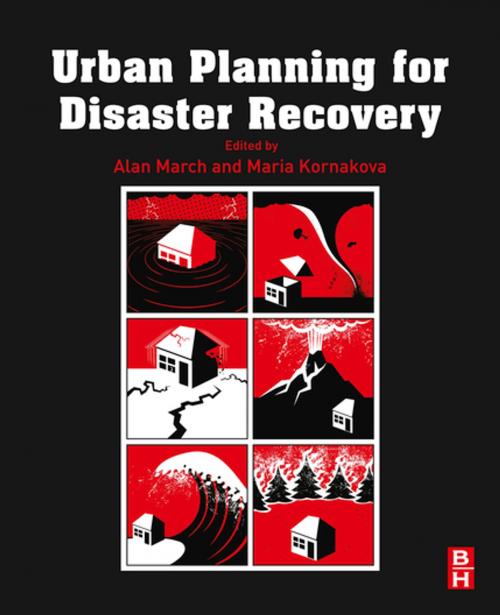Urban Planning for Disaster Recovery
Nonfiction, Social & Cultural Studies, Political Science, Politics, Regional Planning, City Planning & Urban Development, Science & Nature, Nature| Author: | ISBN: | 9780128043233 | |
| Publisher: | Elsevier Science | Publication: | May 10, 2017 |
| Imprint: | Butterworth-Heinemann | Language: | English |
| Author: | |
| ISBN: | 9780128043233 |
| Publisher: | Elsevier Science |
| Publication: | May 10, 2017 |
| Imprint: | Butterworth-Heinemann |
| Language: | English |
Urban Planning for Disaster Recovery focuses on disaster recovery from the perspective of urban planning, an underutilized tactic that can significantly reduce disaster risks. The book examines disaster risk reduction (DRR), in particular, the recovery stage of what is widely known as the disaster cycle.
The theoretical underpinning of the book derives from a number of sources in urban planning and disaster management literature, and is illustrated by a series of case studies. It consists of five sections, each of which opens with a conceptual framework that is followed by a series of supporting and illustrative cases as practical examples. These examples both complement and critique the theoretical base provided, demonstrating the need to apply the concepts in location-specific ways.
- Examines disaster recovery from an urban planning perspective
- Illustrates key concepts with real-world case studies
- Explores the contributions of experts, urban planners, NGOs, and community members
Urban Planning for Disaster Recovery focuses on disaster recovery from the perspective of urban planning, an underutilized tactic that can significantly reduce disaster risks. The book examines disaster risk reduction (DRR), in particular, the recovery stage of what is widely known as the disaster cycle.
The theoretical underpinning of the book derives from a number of sources in urban planning and disaster management literature, and is illustrated by a series of case studies. It consists of five sections, each of which opens with a conceptual framework that is followed by a series of supporting and illustrative cases as practical examples. These examples both complement and critique the theoretical base provided, demonstrating the need to apply the concepts in location-specific ways.
- Examines disaster recovery from an urban planning perspective
- Illustrates key concepts with real-world case studies
- Explores the contributions of experts, urban planners, NGOs, and community members















